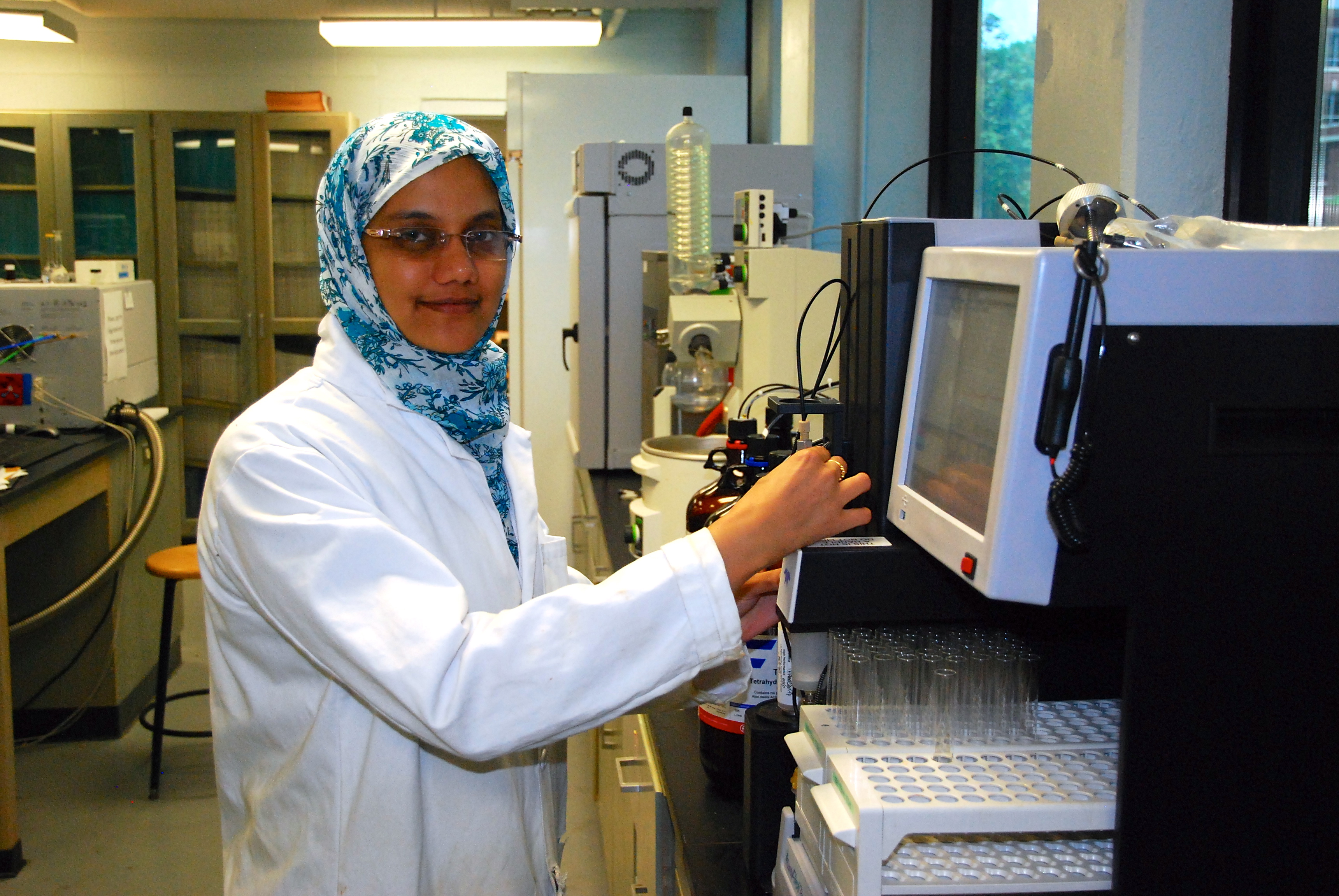Zinia
Graduated in 2014. Currently pursuing Ph.D. at Purdue University, West Lafayette, Indiana.
Research Focus:
Synthesis of Schiff Bases from 2,9-dimethyl-1,10-phenanthroline dialdehyde and sulfur-containing amines

Zinia’s Research Focus:
Recently nitrogen and sulfur-containing organic chelating agents such as the Schiff bases derived from 2,9-dimethyl-1,10-phenanthroline dialdehyde and sulfur-containing amines and their metal complexes have received considerable attention because of their important roles in synthetic and medicinal chemistry[1]. By properly designing this type of compounds and studying their structure-activity relationships, potentially useful antibacterial, antifungal and anticancer agents can also be synthesized [2]. 2,9-Dimethyl-1,10-phenanthroline and its derivatives from which 2,9-dimethyl-1,10- phenanthroline dialdehydes are prepared, are themselves important ligands for complexation with many metal ions [3]. This property has made them important in different areas like self-assembly and catalysis. It has also played a significant role in both analytical and preparative coordination chemistry as well as in the preparation of many mixed-ligand complexes [4].
Although a large number of Schiff bases containing ‘hard’ nitrogen and ‘soft’ sulfur donor atoms have been synthesized using S-alkyl/aryl dithiocarbazates and heterocyclic aldehydes and ketones, which are able to form stable complexes with a variety of metal ions [5], less work has been reported on Schiff bases formed by condensation of 1,10-phenanthroline dialdehydes with sufur- containing amines such as S-alkyl/aryl dithioicarbazates, thiosemicarbazide and aminobenzenethiol.
In view of the importance of Schiff bases derived from 1,10-phenanthroline dialdehyde and sulfur-containing amines in coordination chemistry and biology, we report here the synthesis and characterization of eight new Schiff bases formed by condensation of 5-nitro-1,10-phenanthroline- 2,9-dialdehyde and 5-bromo-1,10-phenanthroline -2,9-dialdehyde with different types of sulfur-containing amines.
Publications:
"Antibacterial activities of new Schiff bases and intermediate Silyl compounds sythesized from 5-substituted-1,10-phenanthroline-2,9-dialdehyde". Zinia Jaman, Mohammad R. Karim, Korsi Dumenyo, Aminul H. Mirza. Advances in Microbilogy, 2014, 4, 1140-1153
“Synthesis of 5-Substituted 2, 9-Dimethyl-1,10-Phenanthroline Dialdehydes and Their Schiff bases with Sulfur-containing Amines”.
Zinia Jaman
*, Mohammad R. Karim**, Tasneem A. Siddiquee*, Aminul H. Mirza†, Mohamad A. Ali†. International Journal of Organic Chemistry, 2013, Vol 3, No. 3, 214-219
References:
[5] Kumar, S., Dhar, D.N., Saxena, P.N., “Applications of Metal Complexes of Schiff Bases – A Review”. Journal of Scientific and Industrial research, 2009, 68, 181
webpage contact:
Chemistry


